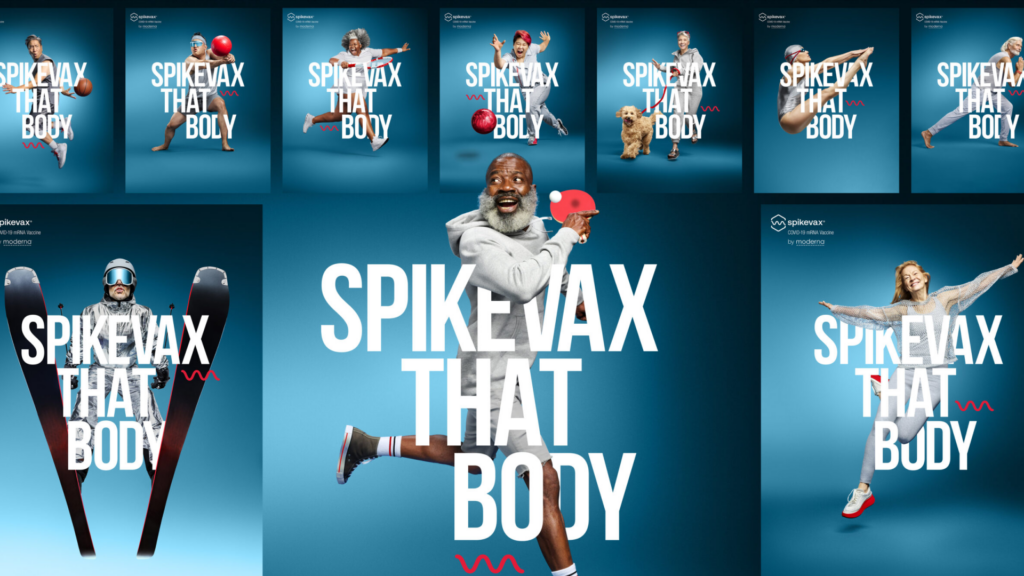Reframing the Conversation: Shifting Perceptions of Vaccination
When it comes to public health, effective communication is key to driving positive health behaviors. These three case studies offer valuable insights into how creative messaging and strategic approaches can influence vaccination rates. From reframing the conversation around shingles to transforming a brand name into a verb, these campaigns demonstrate the power of storytelling and cultural relevance in promoting health and well-being.
As we navigate an ever-evolving healthcare landscape, these examples provide valuable inspiration to create impactful and effective campaigns that resonate with their target audiences. By understanding the importance of storytelling, cultural relevance, and innovative messaging, we can continue to drive positive health outcomes and improve the lives of millions.
Case 1
SHINGLES SEASON (US)
From Seasonal Threats to a Looming Shingles Risk
Shingles vaccination rates were low among healthy adults over 50 who readily received seasonal vaccines like flu shots. The challenge? Shingles, unlike seasonal illnesses, reactivates from a dormant virus already present in most adults. To bridge this gap, a campaign used a powerful calendar image. The shingles rash spread across several months, symbolizing the year-round threat. Launched during flu season, it contrasted the constant risk of shingles with seasonal illnesses.

This reframing, along with the timing, sparked crucial conversations about shingles vaccination at doctor’s offices, ultimately prompting healthy adults to prioritize year-round protection against the virus.
Case 2
SPIKEVAX THAT BODY (US)
Reframing Routine: How Moderna's "Spikevax That Body" Campaign Vaccinated Millions
In late 2023, COVID-19 fatigue set in, and vaccination rates plummeted. With a crowded market dominated by Pfizer, Moderna needed a fresh strategy to launch their Spikevax vaccine.
The “Spikevax That Body” campaign shifted the focus from the scary virus to the empowering act of vaccination. They transformed the brand name “Spikevax” into a verb, positioning it as just another essential health routine, alongside activities like exercising or eating well. Upbeat commercials showcased diverse people engaging in various healthy habits, with Spikevax presented as the missing piece in their routines.

The campaign was a resounding success. Brand awareness for Moderna doubled that of Pfizer, and market share increased by 30%. Importantly, the campaign also received praise for its inclusive and diverse portrayal of Americans. It cleverly reframed vaccination as a routine health practice. Transforming “Spikevax” into a verb alongside exercise or healthy eating, the campaign used diverse characters and upbeat messaging to position vaccination as an empowering step towards a healthy lifestyle, resulting in doubled brand awareness for Moderna and a 30% market share increase, all while being praised for its inclusive portrayal of Americans.
Case 3
UNWELCOME GUEST (US)
A Martha Stewart Masterclass on how to protect you and yours
Pfizer’s 2023 commercial, “Unwelcome Guest,” featuring the iconic Martha Stewart, is a clever and informative piece that promotes the importance of vaccination. The ad uses Stewart’s well-known expertise in homemaking and entertaining to draw a parallel between protecting one’s home from unwanted guests and protecting oneself from infectious diseases.
The commercial opens with Stewart preparing for a dinner party, meticulously arranging flowers and setting the table. Suddenly, a metaphorical “unwelcome guest” – a virus – appears, threatening to disrupt her plans. Stewart, however, is not deterred. She calmly retrieves a vial of the Pfizer vaccine and administers it to herself, ensuring that she and her guests are protected.

The ad’s central message is clear: just as Stewart would never allow an uninvited guest to spoil her party, we should never allow a virus to disrupt our lives. The use of Stewart as a spokesperson is particularly effective, as she is known for her practical advice and ability to handle unexpected challenges with grace and efficiency.
“Unwelcome Guest” is a memorable and informative commercial that effectively communicates the importance of vaccination in a relatable and engaging way. By using a familiar and trusted figure like Martha Stewart, Pfizer has created a piece that is both educational and entertaining.
Key Takeaways:
our cut ABBOVE
We saw
The Power of Reframing: These campaigns demonstrate the effectiveness of reframing complex health messages into relatable and engaging narratives.
The Impact of Visual Storytelling: The use of powerful visuals, such as the calendar image in the shingles campaign, can create a lasting impact and drive behavior change.
The Importance of Cultural Relevance: By aligning with cultural values and understanding their target audiences, these campaigns were able to resonate deeply and generate significant engagement.
We learned
The Value of Storytelling: Engaging storytelling is essential for creating memorable and impactful campaigns. By using relatable narratives and compelling visuals, these campaigns were able to capture attention and drive action.
The Power of Timing: The timing of these campaigns was crucial to their success. By launching the shingles campaign during flu season, GSK was able to capitalize on existing conversations about vaccination.
The Importance of Inclusivity: The “Spikevax That Body” campaign demonstrated the importance of representing diverse populations in healthcare marketing. By portraying a variety of individuals, Moderna was able to resonate with a wider audience.
This encourages us to
Reframe Complex Health Messages: Look for opportunities to reframe complex health messages into relatable and engaging narratives that resonate with your target audience.
Leverage Visual Storytelling: Use powerful visuals, such as infographics, animations, or case studies, to enhance your campaign’s impact.
Prioritize Cultural Relevance: Conduct research to understand your target audience’s cultural values and preferences. Use this information to create campaigns that are culturally relevant and resonate deeply.
Triggers for innovation
How can we measure the effectiveness of our campaigns in changing attitudes and behaviors related to vaccination / medicine intake?
How might we develop innovative partnerships with community
organizations to promote vaccination in underserved populations?
What if we could partner with influencers from various cultural backgrounds
to create culturally relevant vaccination content?
How might we measure the long-term impact of vaccination campaigns on
public health outcomes?
How can we leverage emerging technologies, such as artificial intelligence
and augmented reality, to enhance vaccination campaigns?
What if we create a gamified vaccination experience that rewards users for
staying up-to-date on their immunizations.
ABBOVE TEAM